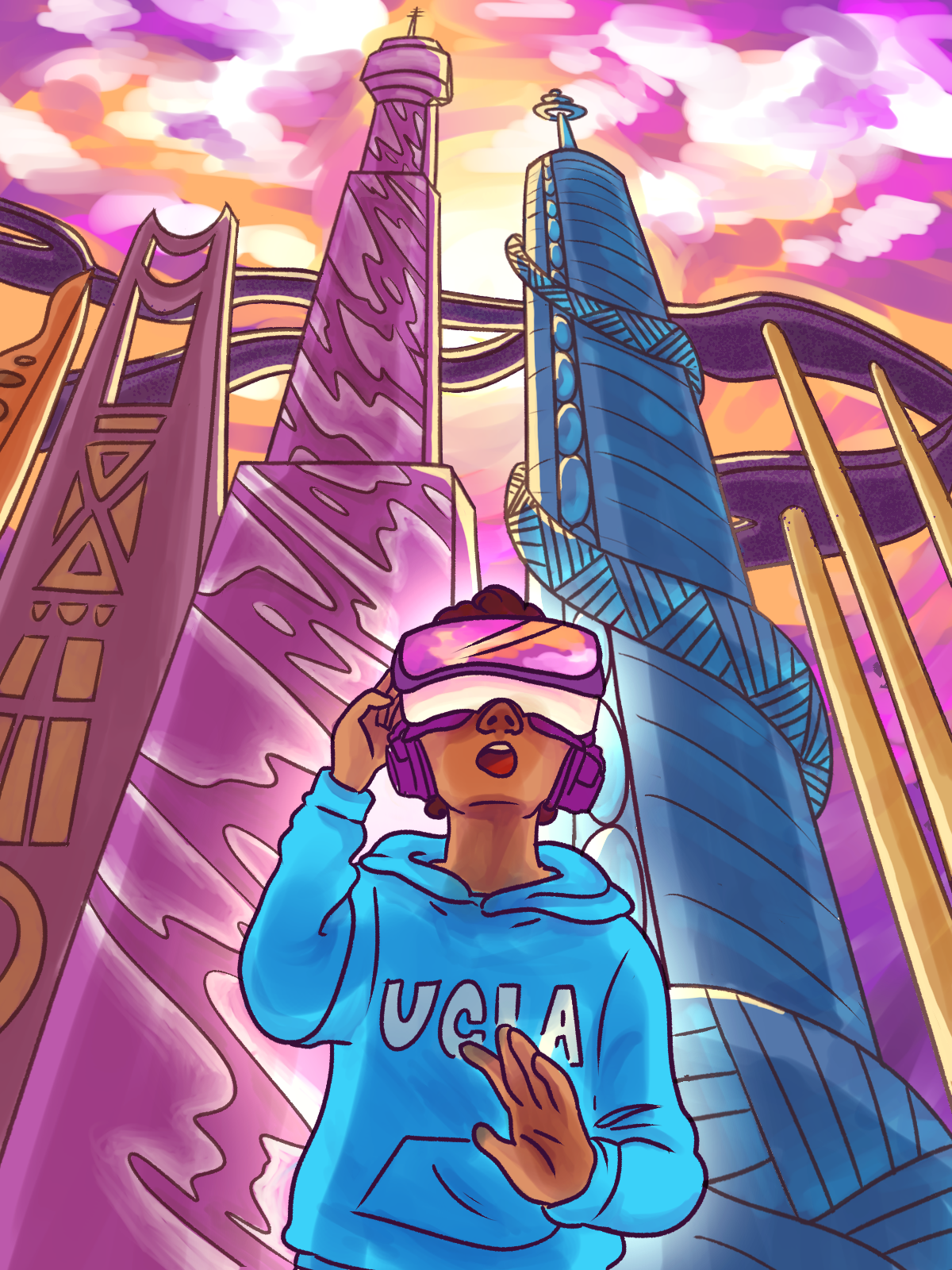Symposium to showcase integration of VR into architecture, design space

(Claire Sun/Daily Bruin)
By Kaia Sherry
April 27, 2018 12:02 a.m.
Presenters at Visionworlds used virtual reality to turn pancreatic beta cells into a bustling cityscape with anatomic infrastructure.
The symposium, which will take place at the UCLA IDEAS campus April 28, aims to show how VR can be integrated into the design process of architectural environments, said Güvenç Özel, lead faculty member and program advisor of IDEAS. Özel said that on a more philosophical level, the symposium will also address how humans occupy digital worlds as they spend increasingly more time online.
“We spend the majority of our time, whether for productivity or entertainment, on computers and we want to see how can we make that time worthwhile,” Özel said. “It’s about how can we make the experience more human.”
Visionworlds follows another symposium that took place at the UCLA IDEAS campus last year, which focused primarily on artificial intelligence and robotics. Özel said the symposiums show how technologies such as VR and robotics exist as a highly intertwined ecosystem.
“The goal is to think about ways in which the architecture and design world can engage with new technological paradigms,” Özel said. “We want to start a conversation between the design world and the tech industry to understand how we occupy nonphysical environments.”
Visionworlds will also feature a parallel exhibition at the same venue, which will showcase various VR content integrated with architecture, emphasizing the future applicability of VR in design space. At the exhibition, the audience members will receive VR headsets for a more immersive experience.
Özel said his research largely addresses two overarching topics: using VR to simulate building designs and to explore fictional, digital environments. The symposium will consider the practical applications of VR, diverging from its traditional science fiction connotation, said Timoni West, director of extended reality research at Unity.
At the symposium, West will deliver a talk on the VR tools already available today, and then address possible challenges of the future. West said computers and digital worlds are currently contained in small physical objects carried around with us. She said her hope is that people will begin to think about computers as infrastructure integrated into the architecture itself, as well as envision design space through the medium of VR.
“On a grander scale, architects should start thinking about how computers won’t just be an item in your house … but much more integrated like beams or a light switch,” West said. “The computer will become a fundamental part of the home itself and we need to start designing spaces to accommodate these flexible digital interfaces.”
Özel’s newest project, a kinetic sculpture capable of responding to the audience’s actions through machine learning, will debut at Visionworlds. It combines mediums such as sensor interaction and VR. Students from UCLA IDEAS campus will also display a project that takes social media platforms such as Twitter and transforms them into an experiential environment using VR technology. The project looks at applications like Twitter as a nontraditional form of architecture, Özel said.
Alex McDowell, professor of University of Southern California’s School of Cinematic Arts and director of World Building Media Lab at USC, will present a project that takes a pancreatic beta cell and exhibits it as a type of architecture. The project uses metaphors analogous to the behaviors of proteins within the cell and maps them out as descriptors for a city, with the proteins acting as inhabitants of an architectural space.
“We are starting to break down all these silos of constrained thinking,” McDowell said. “The idea of specialized thinking being confined to specific fields is a Victorian construct which is not relevant when we’re addressing the complexity of the world we actually live in.”
Özel said the symposium ultimately aims to open the scope of discourse so that VR isn’t chiefly viewed as a toy or gaming device. The research Özel and his colleagues are conducting assumes the integration of VR with architecture is an inevitability, Özel said.
He said ultimately, virtual environments are cheaper, more agile and easier to facilitate changes and transformations to than current planning methods.
“It’s important to develop the rules of designing in the digital world now as VR technology is in the early stages of development,” Özel said. “Then, once it develops we can be ready to create meaningful experiences with them.”

